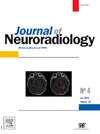Design and optimization of an automatic deep learning-based cerebral reperfusion scoring (TICI) using thrombus localization
IF 3.3
3区 医学
Q2 CLINICAL NEUROLOGY
引用次数: 0
Abstract
Background
The Thrombolysis in Cerebral Infarction (TICI) scale is widely used to assess angiographic outcomes of mechanical thrombectomy despite significant variability. Our objective was to create and optimize an artificial intelligence (AI)-based classification model for digital subtraction angiography (DSA) TICI scoring.
Methods
Using a monocentric DSA dataset of thrombectomies, and a platform for medical image analysis, independent readers labeled each series according to TICI score and marked each thrombus. A convolutional neural network (CNN) classification model was created to classify TICI scores, into 2 groups (TICI 0,1 or 2a versus TICI 2b, 2c or 3) and 3 groups (TICI 0,1 or 2a versus TICI 2b versus TICI 2c or 3). The algorithm was first tested alone, and then thrombi positions were introduced to the algorithm by manual placement firstly, then after using a thrombus detection module.
Results
A total of 422 patients were enrolled in the study. 2492 thrombi were annotated on the TICI-labeled series. The model trained on a total of 1609 DSA series. The classification model into two classes had a specificity of 0.97 ± 0.01 and a sensibility of 0.86 ± 0.01. The 3-class models showed insufficient performance, even when combined with the true thrombi positions, with, respectively, F1 scores for TICI 2b classification of 0.50 and 0.55 ± 0.07. The automatic thrombus detection module did not enhance the performance of the 3-class model, with a F1 score for the TICI 2b class measured at 0.50 ± 0.07.
Conclusion
The AI model provided a reproducible 2-class (TICI 0,1 or 2a versus 2b, 2c or 3) classification according to TICI scale. Its performance in distinguishing three classes (TICI 0,1 or 2a versus 2b versus 2c or 3) remains insufficient for clinical practice. Automatic thrombus detection did not improve the model's performance.

基于血栓定位的深度学习脑再灌注自动评分系统的设计与优化。
背景:尽管存在显著差异,但脑梗死溶栓(TICI)量表被广泛用于评估机械取栓的血管造影结果。我们的目标是创建和优化一个基于人工智能(AI)的分类模型,用于数字减影血管造影(DSA) TICI评分。方法:使用单中心取栓DSA数据集和医学图像分析平台,独立阅读器根据TICI评分对每个系列进行标记,并标记每个血栓。建立卷积神经网络(CNN)分类模型,将TICI评分分为2组(TICI 0、1或2a vs TICI 2b、2c或3)和3组(TICI 0、1或2a vs TICI 2b vs TICI 2c或3)。首先对该算法进行单独测试,然后首先通过人工放置将血栓位置引入算法,然后使用血栓检测模块。结果:共纳入422例患者。2492个血栓被标注在tici标记的系列中。该模型总共训练了1609个DSA序列。两类分类模型的特异性为0.97±0.01,敏感性为0.86±0.01。3类模型即使结合血栓的真实位置也表现不佳,TICI 2b的F1分分别为0.50和0.55±0.07。自动血栓检测模块并没有提高3级模型的性能,TICI 2b级的F1评分为0.50±0.07。结论:AI模型根据TICI量表提供了可重复的2级(TICI 0、1或2a与2b、2c或3)分类。其在区分三类(TICI 0,1或2a vs . 2b vs . 2c或3)方面的表现仍不足以用于临床实践。自动检测血栓并没有提高模型的性能。
本文章由计算机程序翻译,如有差异,请以英文原文为准。
求助全文
约1分钟内获得全文
求助全文
来源期刊

Journal of Neuroradiology
医学-核医学
CiteScore
6.10
自引率
5.70%
发文量
142
审稿时长
6-12 weeks
期刊介绍:
The Journal of Neuroradiology is a peer-reviewed journal, publishing worldwide clinical and basic research in the field of diagnostic and Interventional neuroradiology, translational and molecular neuroimaging, and artificial intelligence in neuroradiology.
The Journal of Neuroradiology considers for publication articles, reviews, technical notes and letters to the editors (correspondence section), provided that the methodology and scientific content are of high quality, and that the results will have substantial clinical impact and/or physiological importance.
 求助内容:
求助内容: 应助结果提醒方式:
应助结果提醒方式:


